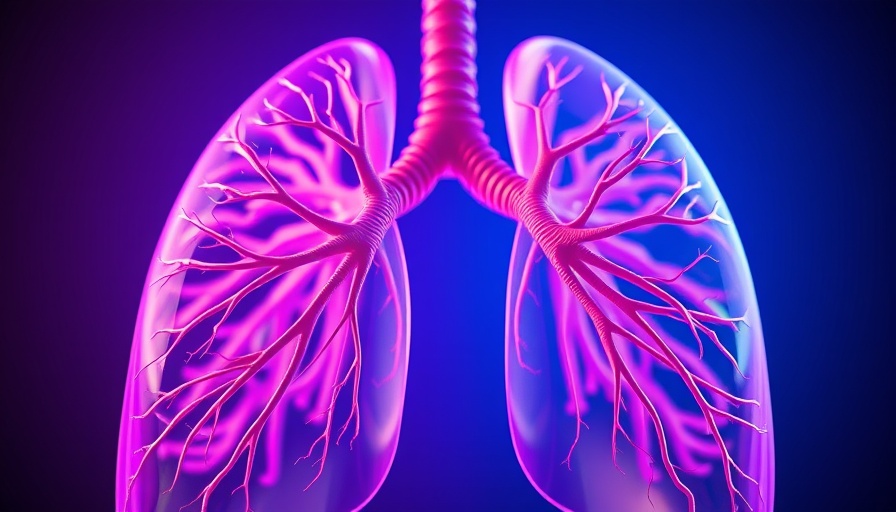
Revolutionary Technique for Collecting Amniotic Stem Cells
In an exciting breakthrough, researchers at the University of Colorado Anschutz Medical Campus have unveiled a method for collecting amniotic stem cells from vaginal fluid, a process that could transform prenatal care and neonatal surgery. Historically, these cells were extracted via amniocentesis—a technique that carries risks for both mother and child. By focusing on a less invasive approach, the new method opens avenues for safer, more accessible stem cell banking and regenerative medicine.
Why This Research Matters
Amniotic fluid encases the fetus, providing essential nutrients and growth factors. It is also a rich source of various cell types essential for regeneration and repair. Joseph Jacot, Ph.D., who led the study, highlights that conventional collection practices limit access to amniotic stem cells, potentially hindering timely treatment for congenital conditions. Notably, their research could ultimately lead to customized treatment solutions for babies, particularly for prevalent heart defects.
Parallel Examples of Medical Advancements
This innovative research mirrors advancements seen in other medical fields, like tissue engineering and genetic therapy. Just as scientists now use less invasive techniques for organ regeneration or utilize stem cells for treatments like leukemia, this new method of collecting amniotic stem cells builds on existing successful practices in regenerative medicine. Harnessing these cells could allow clinicians to create heart tissue in the lab to facilitate treatment for infants diagnosed with heart defects, potentially revolutionizing surgical interventions.
Future Predictions: Impact on Neonatal Care
Looking ahead, the implications of this research are monumental. With the ability to readily harvest stem cells from vaginal births, prenatal care can shift from merely monitoring for genetic anomalies to actively preparing for potential interventions. This could lead to a future where infants may not require several surgeries; instead, a sufficient amount of functional heart tissue could be produced in vitro, reducing the need for invasive procedures as the child grows.
Counterarguments: The Debate on Safety and Efficacy
While this technique presents exciting possibilities, some experts raise questions about the safety and efficacy of using stem cells derived from vaginal fluid. Critics may argue that regulatory approval processes for new medical techniques can be lengthy and complex. It's crucial to ensure that practices are not only innovative but also safe and beneficial for patients. The medical community will need to navigate these waters cautiously, emphasizing empirical evidence and patient outcomes.
The Value of Patient-Specific Stem Cells
One of the most compelling advantages of this collection method is the creation of patient-specific stem cells. This customization enables researchers to model diseases in vitro, providing deeper insights into conditions like hypoplastic left heart syndrome. Such models can be invaluable for developing targeted therapies that are tailored not just based on the condition, but also on the individual patient, enhancing treatment efficacy.
Decision-Making for Health Practitioners
As concierge health practitioners navigate the evolving landscape of prenatal care, this breakthrough has significant implications for their practice. With this new information, practitioners can reconsider their approaches to prenatal consultations. Integrating these advancements into practice may facilitate better patient outcomes and provide parents with more comprehensive care options.
Tools and Techniques for Implementation
For health practitioners interested in adopting this innovative approach, understanding the methodology behind amniotic stem cell collection is essential. Training staff on the new protocol and developing partnerships with research institutions could accelerate the integration of these practices. Utilizing technology solutions to track patient outcomes post-implementation will be crucial for assessing the efficacy and safety of the new method.
Actionable Insights: Steps Forward
As this research continues to unfold, practitioners can stay updated through medical conferences and journals focusing on regenerative medicine. The proactive engagement in discussions surrounding these developments will allow practitioners to enhance their skill sets and improve patient care. Considering the transition to this technique could be a strategic move toward offering cutting-edge treatments for congenital conditions.
In conclusion, as the medical landscape evolves with such promising innovations, practitioners in the field of prenatal care must remain adaptable and informed. This research not only highlights the potential for improving outcomes for infants but also illustrates how the medical community can push the envelope in advancing care quality.
 Add Row
Add Row  Add
Add 




Write A Comment